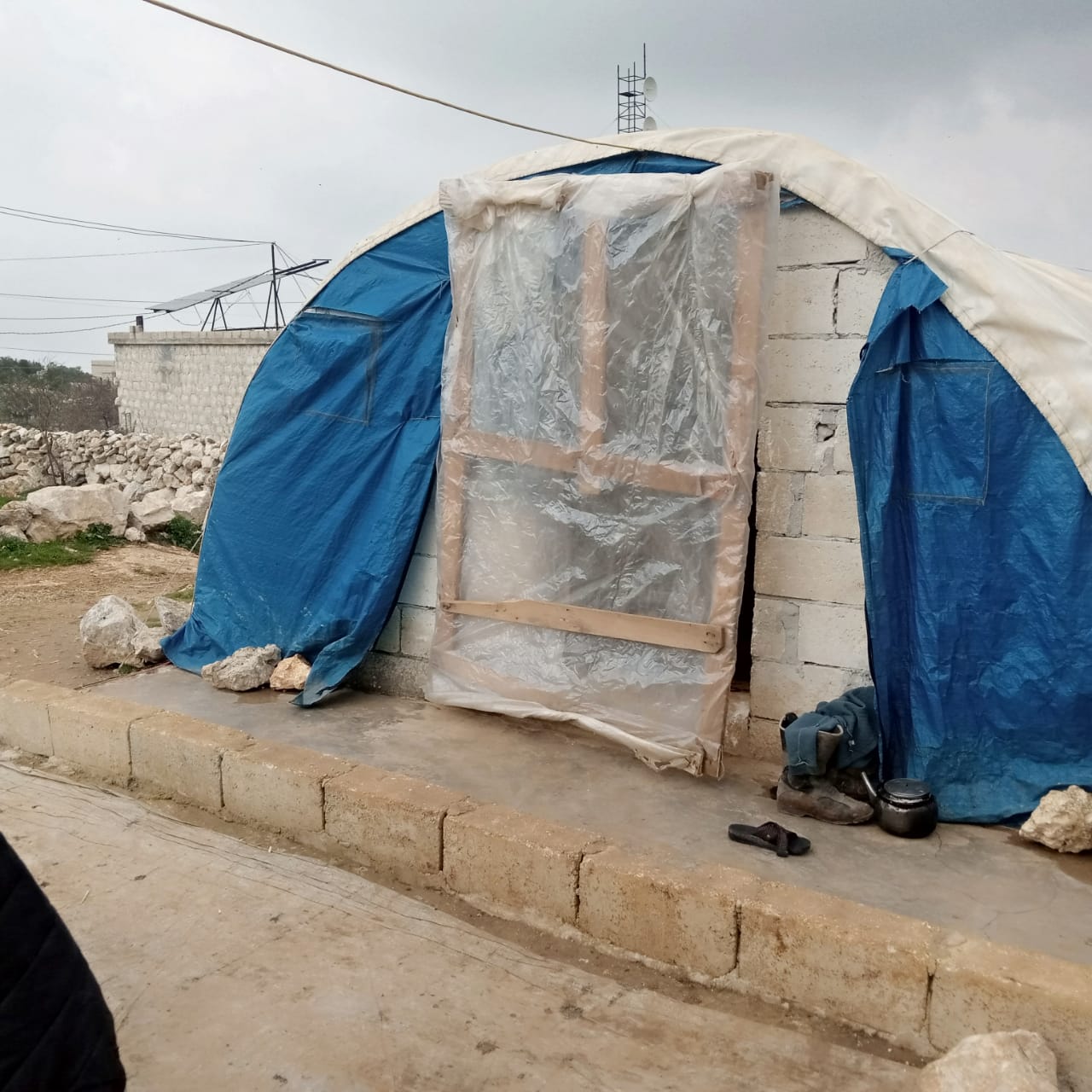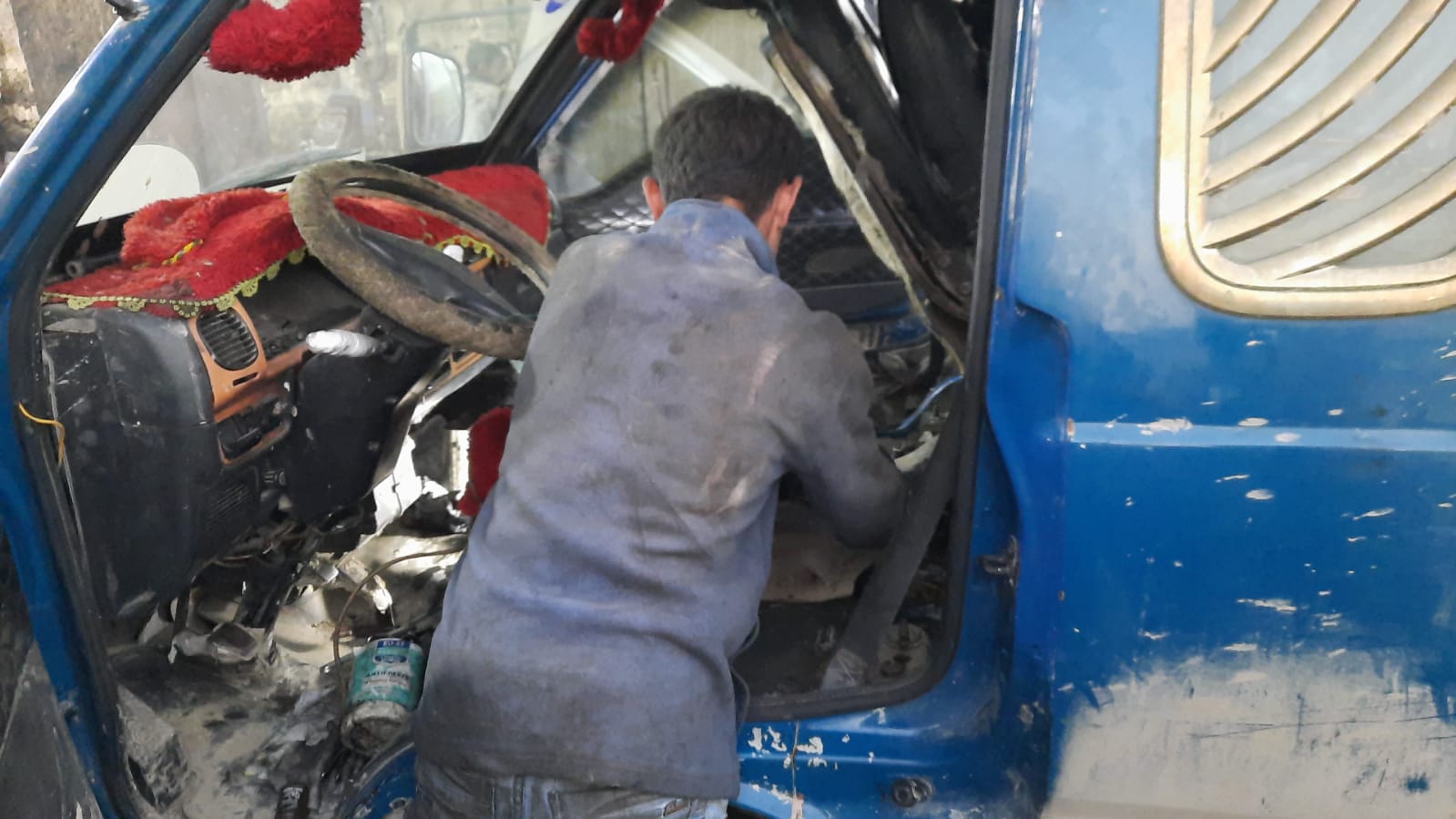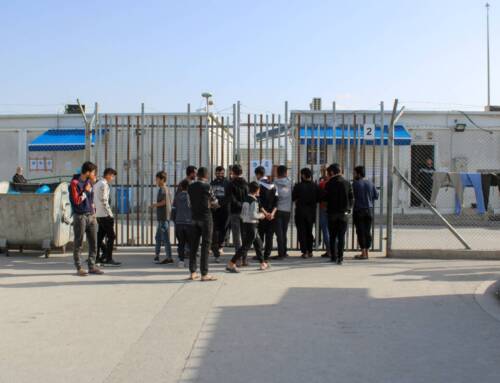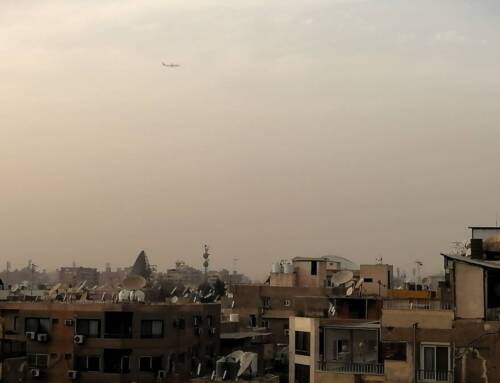A generation left behind: Poverty puts northwestern Syria’s children to work
Grinding poverty keeps thousands of children out of school and on the job in northwestern Syria. Across the country, more than 43 percent of children do not go to school, raising fears of a generation left behind.
9 April 2024
MERSIN — At his family’s secluded tent, set up on agricultural land in Syria’s northwestern Idlib countryside, 11-year-old Ahmad Amro has a simple dream: “to wear school clothes—to go to school.” Instead, the family’s harsh living conditions keep him and his older brother out of the classroom, selling daffodils to help their father.
Ahmad’s family of 10 has lived on private land in the Ras al-Hosn area near Harem, a city in northern Idlib province ever since they were displaced from east Aleppo city’s al-Kalaseh neighborhood in 2016. Because they are not registered as residents of a camp, they receive no assistance, Ahmad’s father told Syria Direct.
“My mother is sick, and my father can barely find work. There is no older brother to take our place, so we help him with work,” Ahmad said. He hoped his family could find someone to “pay for school needs and find housing in a room with walls, because we are tired of the tent, which floods.”
His older brother, Abdo, feels similarly. “When will I learn to read and write,” he wondered. “I’m 13 years old, and have never been to school.”
Thirteen years after the Syrian revolution broke out, 2.4 million children in Syria are out of school, out of a population of 5.5 million between the ages of five and 17, the United Nations Children’s Fund (UNICEF) reported in March.
“A generation of children in Syria have already paid an unbearable price for this conflict,” UNICEF Regional Director for the Middle East and North Africa Adele Khodr said in a press release at the time. To “provide an essential lifeline” for 8.5 million Syrians—including 5.4 million children—the agency needs $401.7 million in 2024, it said. The greatest needs are for water and sanitation, health and education.
Child labor was a problem in Syria even before the latest crisis. A 2002 UNICEF study found at least 18 percent of Syrian children were involved in the labor market, due to deteriorating economic conditions or family disintegration.
In northwestern Syria today, where more than 4.5 million people live, half of them displaced, many children have been forced to leave school to work. Some, like Ahmad, Abdo and four of their brothers, have never been to school at all.
According to figures Syria Direct obtained from the two governing bodies in northwestern Syria—the Hay’at Tahrir al-Sham-backed Syrian Salvation Government (SSG) Turkish-backed Syrian Interim Government (SIG)—of those children who do go to school, 49.5 percent are boys and 50.5 percent are girls.
Children support families
Child labor is the greatest concern in the displacement camps across northwestern Syria, the Syrian Response Coordination Group, a humanitarian nonprofit that conducts need assessments, noted in a February 2024 report. More than 37 percent of children in the camps between the ages of 14 and 17 work, it found.
Poverty rates in northwestern Syria this year are at “an all-time high,” driving children out of school and towards the labor market, the group reported. The unemployment rate in the area stands at 88.74 percent.
Umm Abdo, Abdo and Ahmad’s mother, has eight children: four girls and four boys. Her oldest is 17-year-old Hadeel, and her youngest is six-year-old Muhammad. Muhammad suffers from stunted development, a condition that “results from chronic undernutrition and causes irreversible physical and mental damage to children,” according to UNICEF.
Only two of the children have ever been to school. Hadeel “studied until the sixth grade, and the second-oldest studied until the fourth grade,” the mother said. “Then they left school because we couldn’t afford it.”
Umm Abdo has been suffering from colon cancer for three years. Her family needs 2,000 Turkish pounds ($62) a month for her medicine. She is less concerned about her illness, however, than she is about her children’s education. “My children don’t know how to read and write, and my hope in life is that one of them will be sponsored to study,” she said.
The mother estimated her family needs around $300 a month to get by. Her husband makes $100 a month. Her children’s combined income, “picking daffodils” in January and February and then “collecting plastic and metal from the streets” the rest of the year, comes to around $50.
The family’s combined income covers half of what they need at most. The money that comes in is only enough to buy bread and some necessities, Umm Abdo said. “We are deprived of other food and clothing.”

The tent where Umm Abdo’s displaced family of 10 lives near the village of al-Hosn in the northern Idlib countryside, 17/2/2024 (Syria Direct)
In cities and villages across Idlib province, “no business or shop is empty of children, to say nothing of street vendors,” Bassel Muhammad, who owns an interior decor workshop in Idlib city, told Syria Direct.
Two children—a 13-year-old and a 15-year-old—currently work at Muhammad’s workshop. Both “left school to help their families and learn the trade,” he said. The reason, he said, is “poverty—either the head of the family’s income is low, or the child is the head of the family because there is no breadwinner.”
Some children who attend school also work, Muhammad added. “Many work after school to support themselves.”
One car garage in al-Bab, a city in the northern Aleppo countryside, currently employs four children. One of them is 14-year-old Abdulrazzaq al-Zaim, whose family is displaced from the southern Idlib countryside city of Maarat al-Numan.
Abdulrazzaq left school in the sixth grade, two years ago, “to help my father with expenses,” he told Syria Direct in the presence of his father, Diaa al-Zaim. He would like to go back, he said.
Laith, Abdulrazzaq’s 13-year-old brother, has also left school and works at a pastry shop, their father said. Diaa has not been able to make a living since the family was displaced. If the family could return to his city, he would be able to educate his children, he said.
“Arabic and Quran recitation lessons at the mosque make up for school, in terms of teaching reading and writing,” the father said. But his sons’ “long hours into the evening don’t allow them that, either.”
Boys and girls alike drop out
According to the SSG and SIG education ministries, girls make up a slim majority of students in northwestern Syria. Out of a total of 814,101 students, 410,989, or 50.5 percent, are girls.
The ratio varies from one area to another. In Afrin, a part of Aleppo under the military control of the Turkish-backed Syrian National Army (SNA) that is administered by the SIG, girls make up 51.87 percent of students, while boys make up 48.13 percent. In al-Bab city, 53 percent of students are girls while 47 percent are boys. Meanwhile, in the Aleppo town of Sawran and the Hasakah town of Ras al-Ain (Serekaniye), also controlled by the SNA, boys made up a slight majority of students.
These numbers are in line with figures the UN Office for the Coordination of Human Affairs (OCHA) issued in February 2024, indicating that there are 2.31 million children in northwestern Syria, including 1.21 million girls and 1.10 million boys.
According to each government’s official statistics, there are more children out of school in SIG areas, but this may not reflect reality. SSG statistics only “include every child who started and left school without finishing, while students who never started school at all can only be counted by the Population Department,” Walid Hammadi, head of the Administrative Guidance Department at the SSG’s Directorate of Education, told Syria Direct. His government’s official number for dropouts in Idlib province is 36,000 students.
SIG areas have recorded 500,000 students out of school, SIG Minister of Education Jihad al-Hijazi told Syria Direct. While “the number is high,” he noted “a noticeable improvement in the number of enrolled students compared to last year, which saw 600,000 out of school.”
Al-Hijazi linked children dropping out of school to the economic situation in the area, saying “an improvement to the economic situation would help secure job opportunities and reduce reliance on child labor, therefore [prompting] their return to school.”
A June 2023 report by the Syrian Response Coordination Group found that 85 percent of children who dropped out of school—318,000 children including more than 78,000 in the displacement camps—went to work in various professions, including dangerous trades.
The rates of children out of school are the same for girls and boys in the camps, a member of the protection team at the Syrian Expatriates Medical Association (SEMA) in northern Aleppo’s Azaz city told Syria Direct. “The proportions of males and females are equal in the camps, but many boys work in different sectors, including hazardous work, while girls who drop out work in agriculture,” he explained.
In some cities and villages, more boys than girls work due to “customs and traditions, and the community’s culture not accepting female labor,” he said, “not to mention that there are industrial and commercial jobs males work in such as blacksmithing and construction.”
While poor living conditions in Syria’s last opposition-held areas are a major force driving children into the labor market, the targeting of schools by the Syrian regime and damages from the devastating February 6, 2023 earthquake have also impacted education in the northwest.
In 2023, 30 schools were targeted by the Syrian regime and its ally Russia, according to the Syrian Civil Defense (White Helmets), in what the rescue group called a “systematic strategy to kill and undermine the education process.”
The same year, 550 schools in SSG areas and 270 in SIG areas were damaged by the earthquake, according to figures the two governments provided to Syria Direct. The humanitarian organization Save the Children reported that 54 percent of schools and 37 percent of teaching and learning spaces were affected by the earthquake, which damaged a total of 822 school buildings.
SSG Director of Education Ahmad al-Hassan explained that the 7.8-magnitude earthquake “caused physical effects in the form of casualties and damage to education sites, as well as psychological effects due to homelessness and changing housing environments.”
To address the effects of the earthquake and regime bombings, northwestern Syria needs to build schools and classrooms to accommodate its crowded population and make up for damaged schools, al-Hassan said. It also needs to accommodate children “returning to school due to improved education management,” he added, noting “there are more than 1,000 schools working under the double-shift system.”
In SIG areas, “the dropout rate went up after the February earthquake and [regime] military campaign in October 2023,” Minister of Education Mahmoud Hassan told Syria Direct. “Most of the schools affected by the earthquake underwent repairs, and temporary schools were opened for displaced children. Currently, all impacted schools have reopened.”
Keeping kids in school
The SIG Ministry of Education, through its directorates located in northern Aleppo and parts of northeastern Syria, is working to “bring students back to school by facilitating accelerated education and integration programs, in cooperation with organizations working in education,” al-Hejazi said.
The ministry has also launched “awareness campaigns against child labor, encouraging them to return to school” and is seeking “sponsors for schools and to support teachers so they can be stable in their schools, reducing the chances of [students] dropping out because there are classes with no teachers,” he added.
In turn, the SSG’s Directorate of Education is working to “secure education for all children between the ages of six and 18, facilitate the opening of schools with all necessary logistics and teachers, taking into account how far away schools are, especially in camp areas where students struggle to reach schools,” Hammadi, of the directorate’s Administrative Guidance Department, said.
To prevent students from dropping out of school, the directorate seeks to “provide a stimulating environment for the children by equipping safe, attractive schools and appointing competent teachers,” Hammadi added.
Many humanitarian organizations in northwestern Syria work to support education, whether by providing school supplies or sponsoring families, especially the displaced. They also support educational infrastructure and provide logistical assistance by opening and running schools, particularly in the camps.
Still, these efforts do not match the scale of the education sector’s needs or address the roots of what causes children to drop out of school. In its June 2023 report, the Syrian Response Coordination Group attributed child labor to “the difficult economic conditions families in the area face, which drive children into the workforce.” Meanwhile, “there is no kind of legislation from the local authorities to prevent children from entering the labor market, and no minimum legal [working] age,” it added.
Other causes include “the continued displacement of civilians in the area, which has increased the difficulty of securing what children need,” as well as “the small number of schools compared to the growing population and a gradual shift to private education,” the group reported.
The SEMA protection team emphasized the role of “poverty, and the family’s need for all its members, including children, to work to overcome the harsh burdens of life.”
Given the “lack of available job opportunities for educated people to make a good income, the idea that education is not important for their children takes root among parents,” the team added, leading them to be pushed into the labor market.
Facing this reality, those in charge of education in northwestern Syria should “raise awareness of the importance of education, especially for girls, and help families meet their needs by providing job opportunities that compensate for their children’s income,” the SEMA team said.
At the same time, laws should be enacted and enforced that “limit child labor, establish a legal working age” while “imposing penalties for employing underage children,” the team added. Perhaps more important would be to “link financial assistance provided to families with education,” obliging beneficiaries to educate their children.
The protection team noted that very few of the proposed solutions are being implemented. Some small projects provide job opportunities for vulnerable families, but the number in need far exceeds what is available.
Child labor endangers more than education. “Children going out to work at dawn and late at night” are at risk, the protection team added, noting the area has seen “many children reported lost while going to work or returning home.”
Education may have become a dream for children, like Ahmad Amro, in northwestern Syria, but it is their basic right. As Article 26 of the Universal Declaration of Human Rights states: “Everyone has the right to education. Education shall be free, at least in the elementary and fundamental stage. Elementary education shall be compulsory.”
This report was originally published in Arabic and translated into English by Mateo Nelson.







